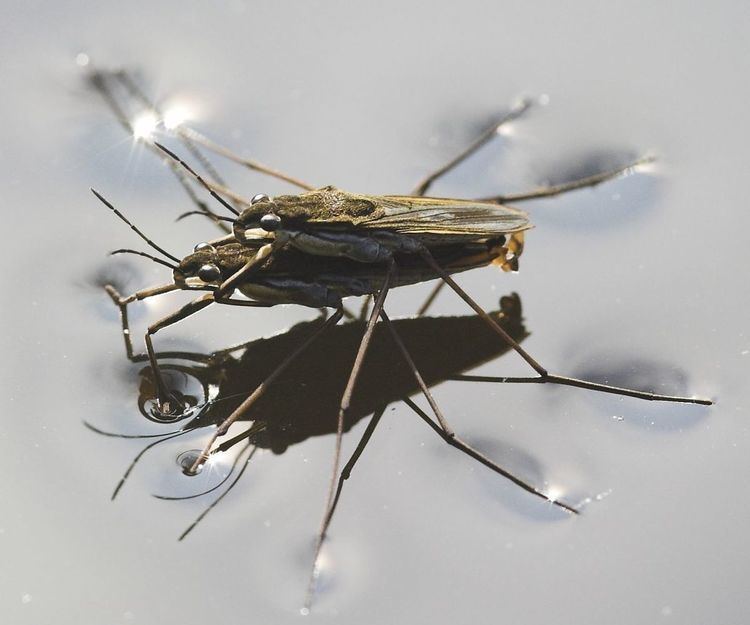 | ||
Pleuston are the organisms that live in the thin surface layer existing at the air-water interface of a body of water as their habitat. Examples include some cyanobacteria, some gastropods, the ferns Azolla and Salvinia and the seed plants Lemna, Wolffia, Pistia, Eichhornia crassipes and Hydrocharis. Some fungi and fungi-like protists may be also found.
Contents
Neuston
The term Neuston is used either:
Neustons, broadly defined, are made up of some species of fish (see flying fish), beetles (see whirligig beetle), protozoans, bacteria and spiders (see fishing spider and diving bell spider). Collembola in the genera Podura and Sminthurides are almost exclusively neustonic, while Hypogastrura species often aggregate on pond surfaces. A water strider, Gerris, is a common example of an insect that supports its weight on water's surface tension. By extension, the term may also refer to non-organismal floating aggregations (see, e.g., Great Pacific Garbage Patch).
Contrasts with other aquatic life
Contrast the terms plankton (the organisms that float or drift within the water), nekton (the organisms that swim, powerfully, in the water), and benthos (the organisms on the bottom of a body of water).
